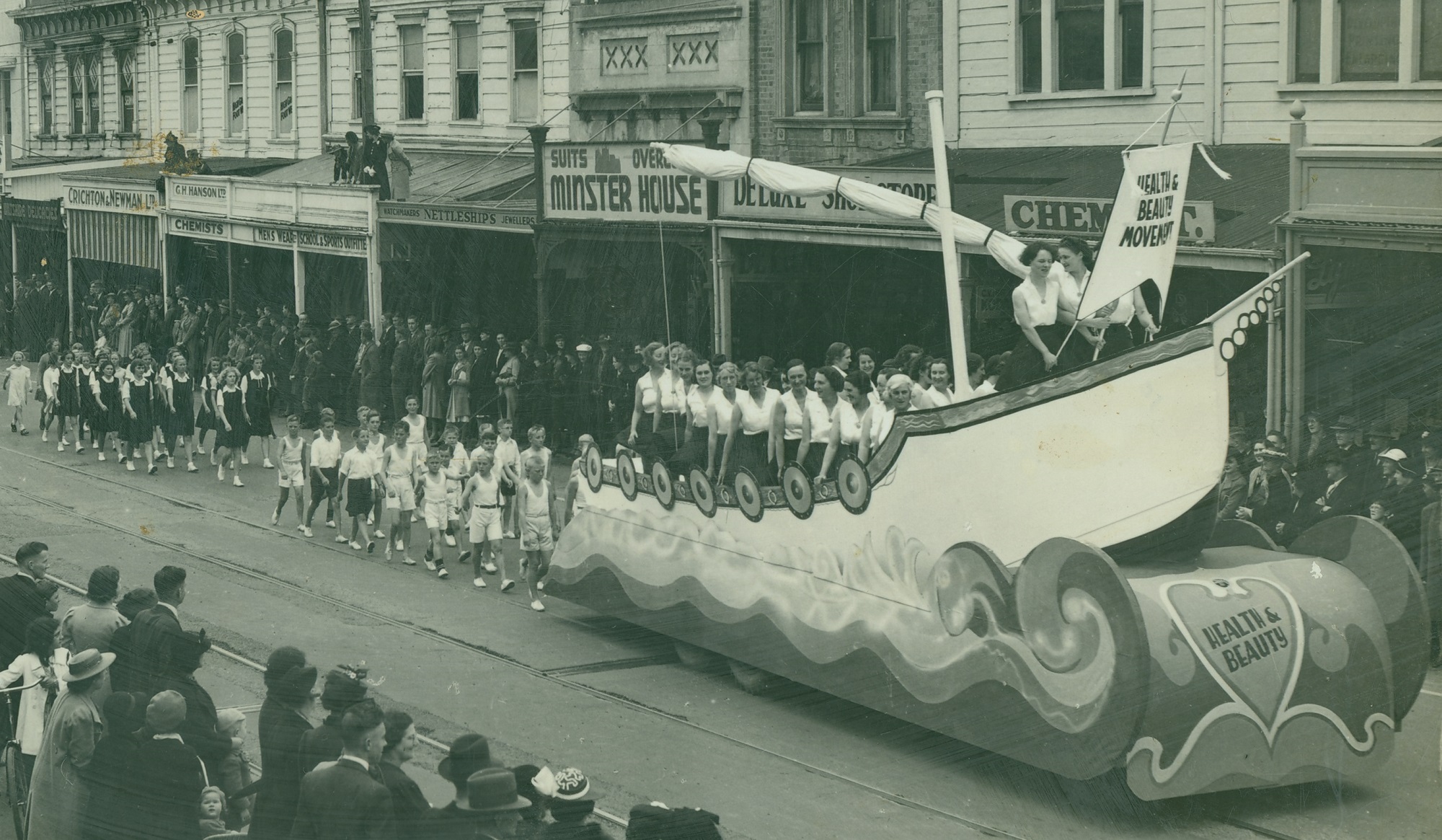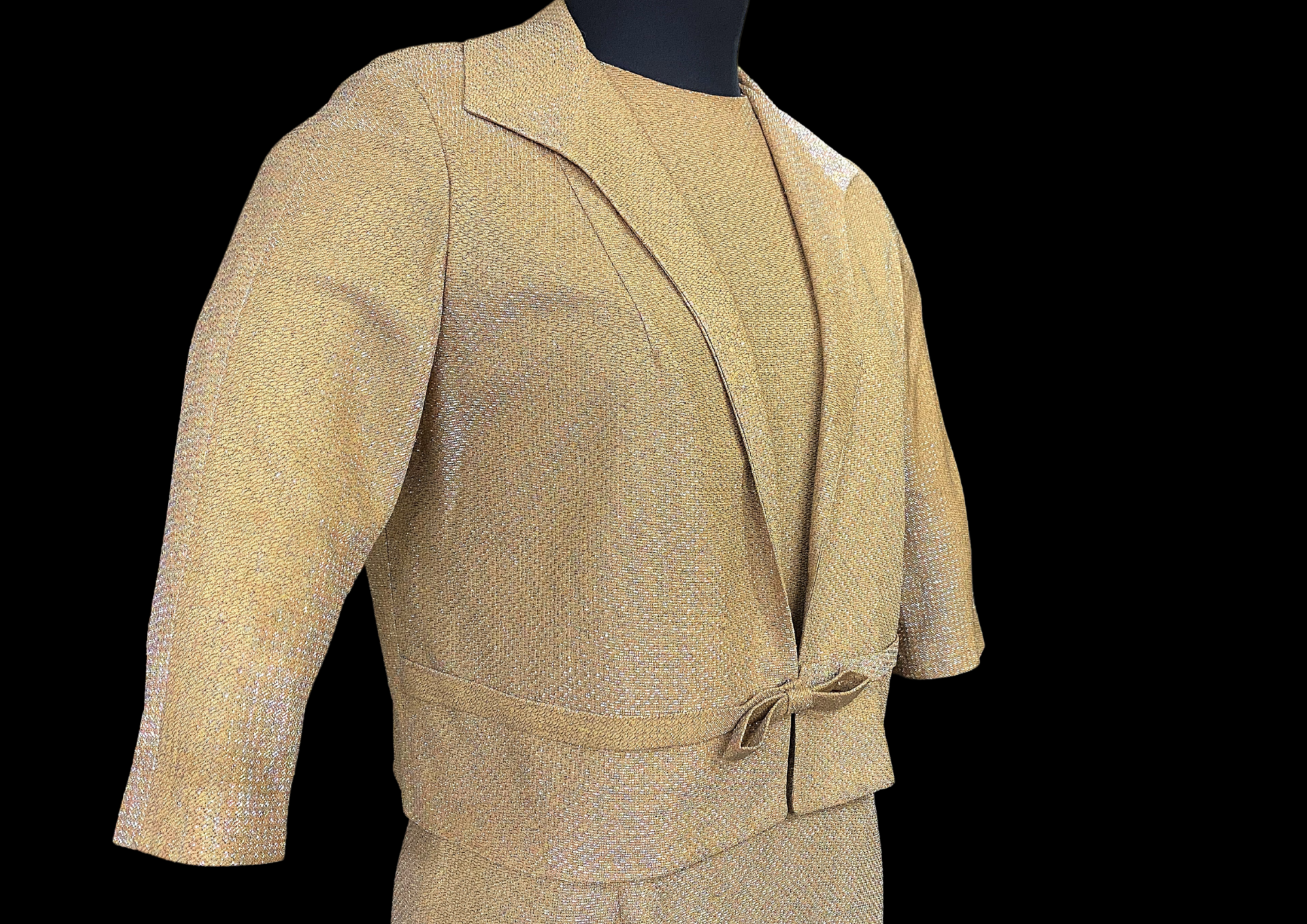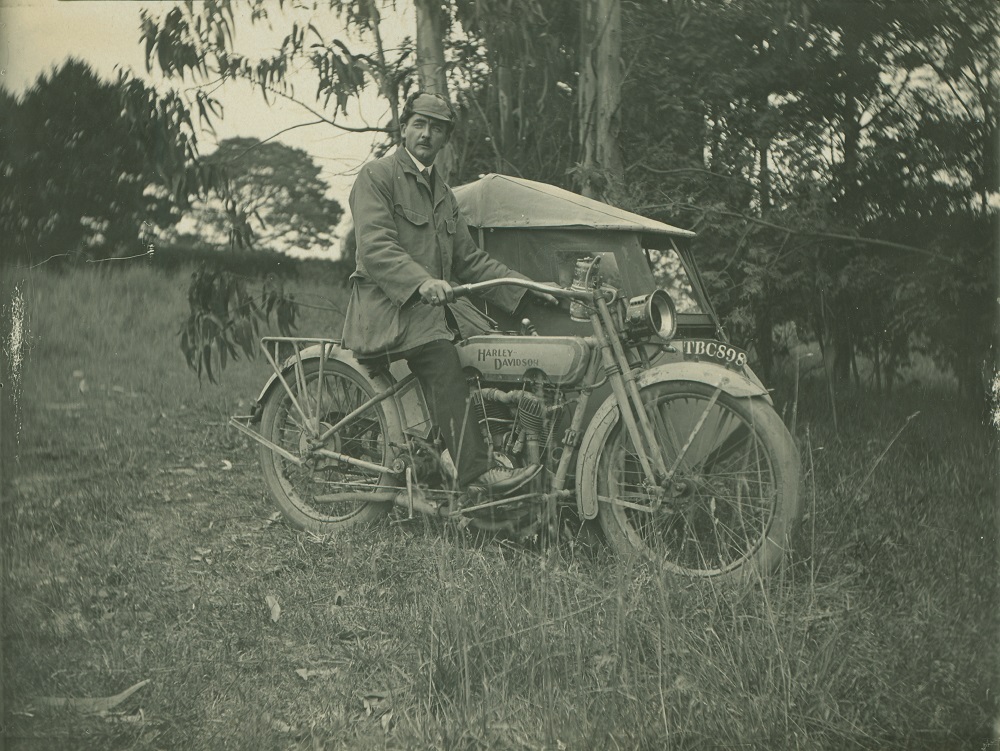Collection Stories
This delicate dress with a short cape typifies the fashion of the early Victorian period, when extremely large gigot (leg of mutton) sleeves on gowns were giving way to tight-sleeved form-fitting bodices and modesty was emphasised.
Made from a cotton muslin fabric, the dress is entirely hand sewn. The abstract floral design has been printed with six colours, using a mix of machine rolling base colours and hand blocking other colours over the top. Blocking after rolling was very labour intensive and was abandoned in the garment industry by the 1850s. The self-striping, which was fashionable from the 1830s, was created in the fabric by making areas of increased warp threads in a plain weave.
The bodice is constructed with a wide shallow neckline and shaped pleating through the bust, and it is finished with a decorative lozenge at the centre.
The sleeves are à la giraffe or virago style: the fullness of the sleeve is banded down at intervals creating a series of puffs. This style is created using cotton tape sewn inside the sleeve from the underarm and attached at each narrowing point.
Although we are not sure who wore this dress what we can tell is that she was a small woman, approximately 150cm tall, with a 53 cm waist.
By Trish Nugent-Lyne, Kaihāpai Taonga/Collections & Curatorial Lead at Whanganui Regional Museum.
Image: Walking dress
Mid 1830s to early 1840s. Designer and maker unknown.
Photographed by Kathy Greensides
WRM 1805.53
View the full-length image.






